I went on the trail of haiku in Matsuyama, Japan
In the home of haiku, this traveller followed a trail of hidden poetry post boxes and discovered the highlights of Matsuyama along the way.
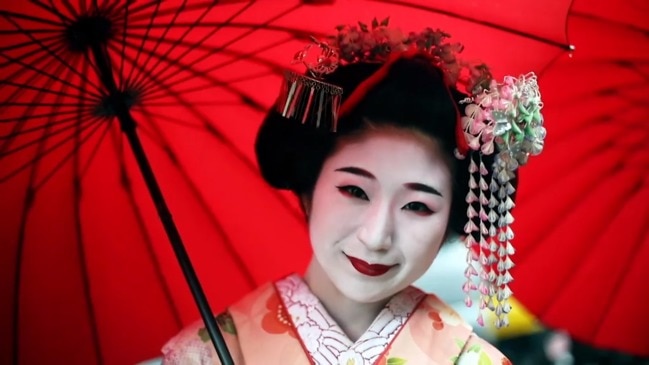
Lifestyle
Don't miss out on the headlines from Lifestyle. Followed categories will be added to My News.
I’ve been in Japan for less than 24 hours and somehow, I’ve found myself in a ruby-red basement bar watching an 89-year-old magician make a 1000-yen note levitate. I pull an Aussie $5 note from my purse and he does it again. How have I landed in this unlikely den? Haiku poetry.
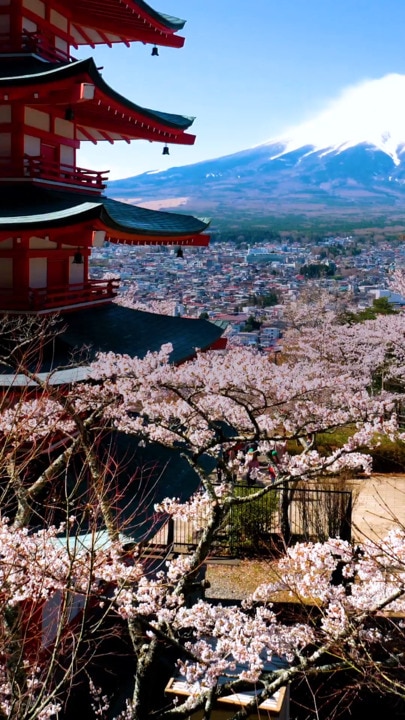
Remember learning about those three-line poems at  school, clapped out to ensure they contain a 5-7-5 syllable combo? The city of Matsuyama, a 1.5-hour flight from Tokyo in Japan’s lesser-known southwest, is the home of haiku. Ringed by mountains and edged with islands, it is where the poet who coined the term and modernised the art form, Masaoka Shiki, was born. One of Japan’s four haiku masters, Shiki nailed the art of writing short verses that play on words and never rhyme.
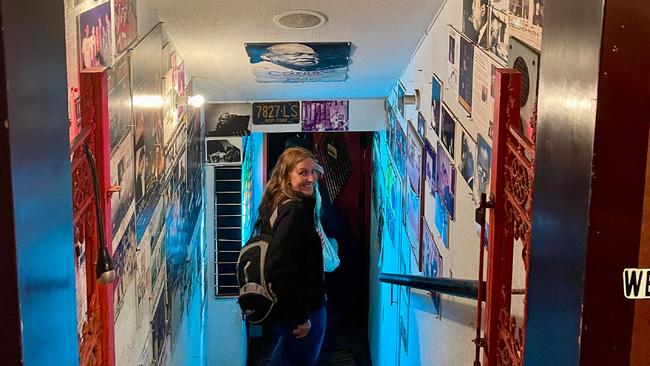
In a nod to its heritage, Matsuyama maintains more than 90 haiku post boxes around the city. All different in shape and size, each contains lead pencils and slips of paper in English or Japanese, with instructions like: “The topic should be about nature or people and their feelings.” There are blank spaces for those inspired to craft a few lines, add their details and “post” them to the city via the slot provided – all for free. A city-appointed panel of haikuists reads the poems and publishes the best in the Ehime Shimbun newspaper.
I’m besotted with the idea, so since arriving, I’ve been on a search. Now here I am in a subterranean haiku bar, found down a dim stairwell that made me feel like Wonderland’s Alice plunging down the rabbit hole. Smaller than a train carriage – barely 3m by 4m – it’s so packed to the gills with CDs, jazz posters and matchboxes that my five friends can barely fit. Three suited Japanese businessmen graciously take back seats so we can perch on bar stools, ringside to the action.
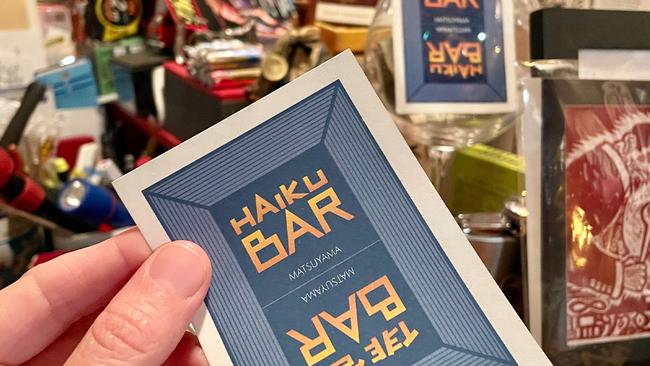
As well as performing bewilderingly believable magic tricks, barman Hirofumi Tsutsumi is a jazz musician and writer of jazz haiku books. His micro bar, Jazz and Magic Bar WBGO, became part of a haiku bar trail in 2017, when the city celebrated poet Shiki’s 150th birthday. Dressed in specs and a checked shirt with no need for gloves and glitter, Tsutsumi selects a CD track to add drama, hands out cans of beer and spontaneously starts a show. The cost of this unexpected experience? The equivalent of $30.
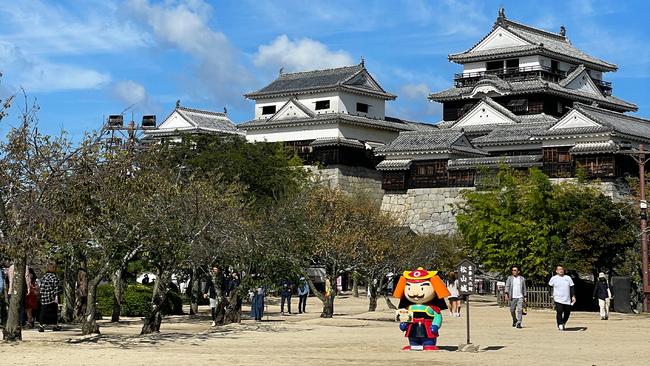
My haiku hunt continues the next day, when I head to Matsuyama Castle, one of 12 remaining original castle keeps in Japan. I arrive on its mountaintop via chairlift, the quiet glide amplifying bird chirps and wind tousling Japanese maple tree leaves as sunshine warms my back. I see how Matsuyama inspires poetry. Coming my way, an elderly lady swings her legs on her single chair, calling out to her friends sitting several metres behind. Were they 70 years younger, I might not remark on the scene. It’s delightful.
As I jump off and pass wooden-fronted shops, elation: I spot my first haiku box. The post slot is cut into a gunmetal grey, obelisk-shaped rock, its surface carved with Japanese characters. There’s a rectangular wooden box to its left, with a little door that reveals haiku papers and a solitary pencil. I take one and inscribe: Legs swing joyfully/Chairlift chatters between friends/Old age forgotten.
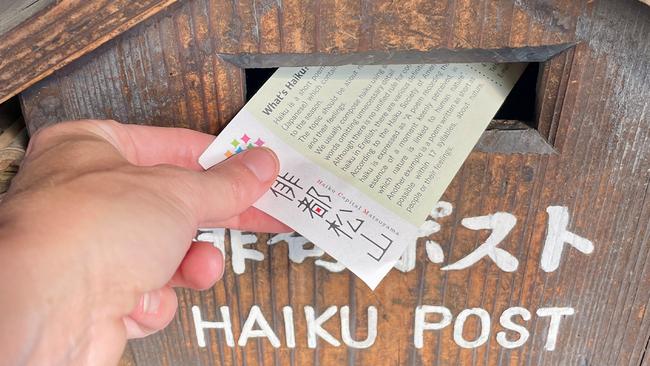
Poem posted, I scout the castle’s 400-year-old stone walls, rocks fitted together like a haphazard jigsaw. I arrive at the castle courtyard, where another haiku box is inconspicuously stationed. It’s wooden, with a triangular roof like a bird feeder, sporting a tiny, bamboo-fronted compartment filled with paper slips. Steps from its vantage point, I see more poetry in the Seto Inland Sea, shining under cornflower blue skies painted with brushstroke clouds. Pancake-flat water meets undulating mountains smothered in tall, dense forest. How many haikus must reference this view?
Inside, it’s revealed that even the castle’s Edo-period feudal lords were inspired to craft haiku. Beside a glass-encased suit of armour and helmet are three translated lines written by the first of the Matsudaira lords: Birds/All a twitter/Yoshiwara warblers.
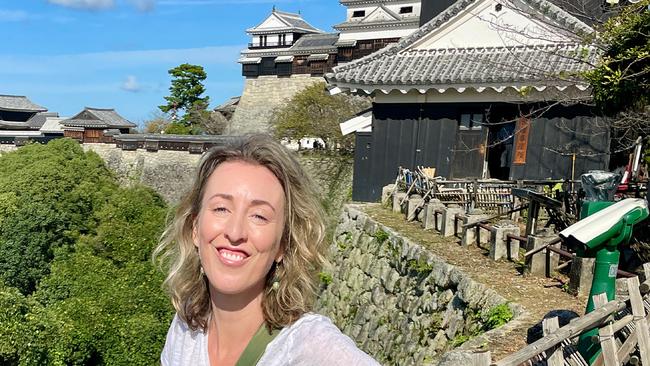
I read that many of Matsuyama’s street stones and monuments are carved with haiku, and that haiku boxes are even found on the city’s trams, should a moment of creativity strike. I take one to Dogo Onsen Station, yet can’t spot a poem slot in the shiny, modern interior. I do spot street carvings, but my Google Translate app can’t read the clefts. Haiku hunting is harder than it seems.
Stepping out to Dogo Onsen, said to be the oldest hot spring in Japan and gleaming from years of renovations finished in July, my haiku quest is rewarded. Beyond the grand entrance, a small pine box sits discreetly on the ticket checking desk. The desk clerk knows the drill and lends me one of only two pencils inside, and, in an oh-so-Japanese way, trusts me to return it later (I do).
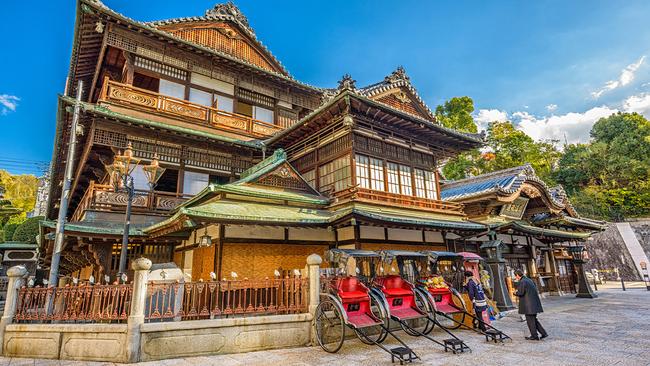
Inside the women-only changeroom, all skin is on show, every age, shape and size. Starkers and slipping into the onsen’s 42C waters, I muse about its 3000 years of history, sparked when locals noticed a white egret dipping its injured leg in the hot, alkaline spring water. The limb healed quickly, and the spring’s health properties were joyfully discovered. Nature, people, feelings and simplicity: just like a haiku.
Images of the egret dance across Matsuyama’s streetscapes and crown the onsen like a weathervane. I’m told artists and literary figures have been drawn here for centuries, channelling creativity while they soak. I feel it too, and emerge from the source a far deeper believer in both poetry, and magic.

The writer was a guest of Japan National Tourism Organisation and All Nippon Airways.
How to get to Matsuyama from Australia
ANA flies direct to Tokyo from Sydney and Perth; seasonal flights include one free domestic side trip (our tip is to take it to Matsuyama).
Don't miss this
Visit Matsuyama’s quirky orange juice bars, where shiny steel wall-taps dispense a wide range of citrus flavours.
Where to stay in Matsuyama, Japan
Stay at Candeo Hotels Matsuyama Okaido, where there’s an onsen-like spa pool and sauna on the 13th floor with wraparound views of the surrounding mountains. In a Japanese quirk, it’s the done thing to wear the provided hotel PJs to breakfast in the Sky Plaza restaurant.
More Coverage
Originally published as I went on the trail of haiku in Matsuyama, Japan




